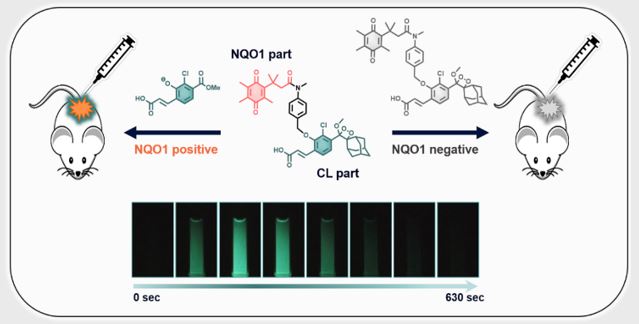Activatable (turn-on) probes that permit the rapid, sensitive, selective, and accurate identification of cancer-associated biomarkers can help drive advances in cancer research. Herein, a NAD(P)H:quinone oxidoreductase- 1 (NQO1)-specific chemiluminescent probe 1 is reported that allows the differentiation between cancer subtypes. Probe 1 incorporates an NQO1-specific trimethyl-locked quinone trigger moiety covalently tethered to a phenoxy-dioxetane moiety through a para-aminobenzyl alcohol linker. Bio-reduction of the quinone to the corresponding hydroquinone results in a chemiluminescent signal. As inferred from a combination of in vitro cell culture analyses and in vivo mice studies, the probe is safe, cell permeable, and capable of producing a “turn-on” luminescence response in an NQO1-positive A549 lung cancer model. On this basis, probe 1 can be used to identify cancerous cells and tissues characterized by elevated NQO1 levels.

https://onlinelibrary.wiley.com/doi/full/10.1002/anie.201813032
 Proteogenomic Characterization of Human Early-Onset Gastric C...
Proteogenomic Characterization of Human Early-Onset Gastric C...
 Molecularly Controlled Stark Effect Induces Significant Recti...
Molecularly Controlled Stark Effect Induces Significant Recti...

















